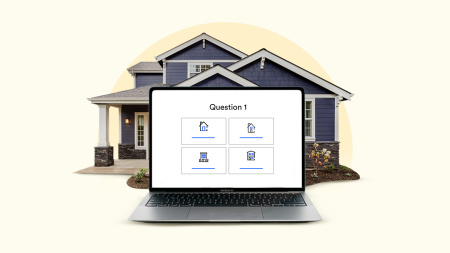Key takeaways
- Marketplace lending can ease the loan shopping experience for consumers by allowing them to compare multiple lenders in one place.
- Consumers should consider the pros and cons of using a marketplace lender and be aware of the fine print when getting a loan.
- The future of marketplace lending could be impacted by the economy, regulations and AI.
Penny Crosman knows a thing or two about marketplace lending. She’s covered technology in the financial services industry as an executive editor at American Banker for a decade and has written multiple articles about the banking industry’s rapidly growing marketplace lending landscape. You could say she’s watched the marketplace lending industry “grow up.”
The original intent of marketplace lending was to give individual consumers a way to lend to one another. “A divorced mom in Ohio could explain why she needed $6,000 to pay off her credit card debt, and someone across the country could read her story and lend her the money,” Crosman explains.
However, finding enough consumers to fund these loans was a challenge. To meet that challenge, marketplace lenders began to seek funding elsewhere. “LendingClub, Prosper and others turned to banks and other institutional investors to fund and/or buy these loans,” said Crosman.
Over time, another variation of marketplace lending began to evolve as fintech companies created platforms to connect borrowers with lenders. “The sites let consumers see what loans are available from different lenders. They fill out forms sharing some of their information and these matchmakers route the applications to banks for whom the borrower and loan seem to be a fit.”
What is marketplace lending?
Traditional marketplace lending, or peer-to-peer lending, is typically an online company that partners with banks and credit unions, non-traditional financial institutions and even individual investors to give customers access to a variety of loan options. The company manages the full loan process, including loan application, approval and repayment. Popular marketplace lenders include companies like Upstart, Avant and LendingClub.
Marketplace lending can also refer to marketplace matchmakers that present lender options to consumers and allow borrowers to prequalify for loans with a lending partner through an online application form. Unlike traditional marketplace lending, matchmakers do not manage the full loan process. Once prequalified, the borrower works directly with the lender they ultimately decide to borrow from.
Expert insight from Denny Ceizyk, Bankrate senior writer
In many ways, marketplace lending is simply a digital version of the mortgage broker world I used to live in. I researched multiple lenders, developed business partnerships with them and matched their products to my customers’ financial profile and loan needs.
There’s one big (and better) difference that sets marketplace lending apart from my old mortgage broker model: a lightning-fast computer algorithm does the matchmaking with lenders to give you pre-qualified decisions in minutes. That’s way faster than what I could do.
How do you get a loan through marketplace matchmaking?
If you’ve shopped for a loan in the recent past, you may have used a marketplace lender without even knowing it. Whether you’re searching for the best mortgage or the best personal loan, your Google search is likely to take you to sites, like NerdWallet, Lending Tree or Bankrate, that give you a wealth of information about a variety of lenders on the same page based on your query.
The “golden rule” of loan shopping says you should review at least three different lenders and compare rates, fees and perks before you decide on one. You can do that manually, which means scrolling and squinting at the small print on each lender’s website. Or, you can visit a marketplace where each lender’s details have already been researched and laid out for you to review.
While there are variations on how each marketplace works, a potential borrower would go through the following steps to be matched with a lender on Bankrate:
- Find the marketplace. A consumer searching online for something like ‘best personal loans’ may find Bankrates’ page for best personal loan lenders. This page shows key details for Bankrate’s featured or partner lenders, such as lowest APR, minimum credit score or maximum loan amount, so consumers can compare multiple lenders in one place. The recommended lenders on Bankrate’s rate table can include both partner lenders that we receive compensation from and editorial recommendations. Read our methodology and learn more about how we make money.
- Read expert information on each lender. This is where the marketplace matchmaker shines. A wealth of information has been compiled about rates, terms, fees, qualifying requirements and even lender perks by our experts and organized on easy-to-scan rate tables. You can see reviews, check out which lender received awards and even find out what other customers are saying about their lending experiences.
- Fill out an application and get multiple offers. When a consumer clicks to ‘view offers’ they will be prompted to fill out a form to pre-qualify for a loan with one of the lenders featured on the page. This pre-qualification process will not impact credit score and can be especially beneficial for borrowers with fair or bad credit who don’t know what they qualify for.
- Reviews offers and apply for funding. When the consumer is matched with a lender, the loan application is completed through the lender and the marketplace is out of the equation. The borrower completes the loan with the lender they have chosen and the paperwork and any further communication takes place directly with the lender.
Pros and cons of marketplace matchmaking
“[With marketplace lending] consumers with high credit scores can get a quick loan at a low rate,” Crosman says. Borrowers with a low credit score can get loans through marketplaces that they cannot get from a traditional bank.”
“On the other hand, consumers with poor credit can end up paying high rates. You could also argue that these sites make it easier for people to get loans they can’t afford. But you could say the same thing about credit cards and buy now, pay later loans.”
Pros and cons to consider when using a marketplace:
Pros
- Detailed information is provided for several lenders in one place. Consumers can quickly compare options and read reviews.
- Get multiple offers without contacting each lender individually.
- Interest rates may be lower than at a traditional financial institution, and borrowers with low or bad credit may be able to get a loan more easily.
Cons
- In some instances, only partner lenders that make the marketplace money are represented on the site. Bankrate presents a list of best lender options, including both partners and non-partners.
- May get multiple calls for several weeks after submitting a lead form.
- Consumers may not know that they are applying for a loan through a marketplace.
Even with the convenience of viewing multiple lenders in one place, it’s important for borrowers using a marketplace to have an understanding of how it works.
“I haven’t seen any surveys about this, but my guess would be no [consumers do not have a good understanding of how marketplace lending works],” says Crosman. “Marketplace lending is not a common household topic, as far as I can see. Very few consumers read all the fine print. And if someone needs to get a loan quickly, they’re more focused on qualifying for and getting the loan than the nuances of how the loan is funded.”
Future of marketplace lending
According to Crosman, the future of marketplace lending could continue to evolve based on factors such as regulation and AI.
“I think the volatility and uncertainty [in financial markets] has cooled banks’ interest in buying packages of loans from marketplace lenders. On the other hand, I think the current climate of deregulation will help banks that want to work with marketplace lenders – there will be far less regulatory scrutiny of this space than there has been over the past four years.”
“These marketplaces let banks broaden their reach and buy or invest in loans for people who might never have heard of the bank. Banks can choose the loans they want to buy based on FICO score tranches, which helps them manage risk. Funding loans to borrowers in low-income areas can help them meet Community Reinvestment Act obligations.”
“I think AI has already helped with growth in this area. Many, including Upstart and Avant, use AI in their underwriting and fraud detection. AI models can process far more data. They can help make more nuanced lending decisions and detect patterns of fraud that a human or a rules-based model could not see. This trend is bound to continue. AI is seeping into basically everything.”
Bottom line
With so many online lenders, banks and credit unions to choose from, it can be quite an undertaking to follow loan shopping advice. Taking the time to vet even a few lender’s websites could take hours. Marketplace lenders and matchmakers can be time and money-savers, giving you access to loan offers and detailed lender information in one place much faster than going it alone. Regardless of how you shop for a loan, make sure you understand the rates, fees and terms before you sign on the dotted line. And never, ever pay any type of lender an upfront fee to get a rate quote.
Read the full article here









